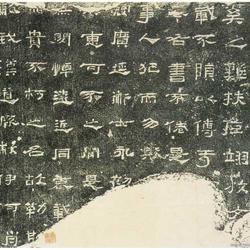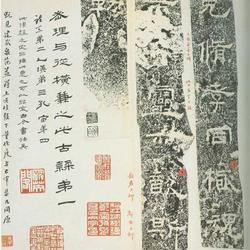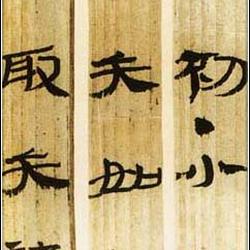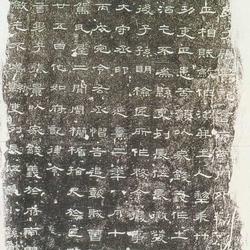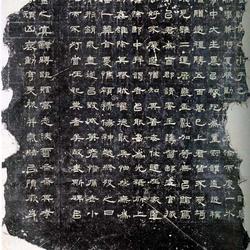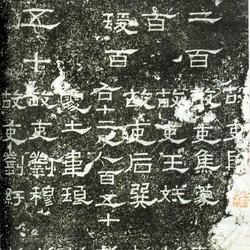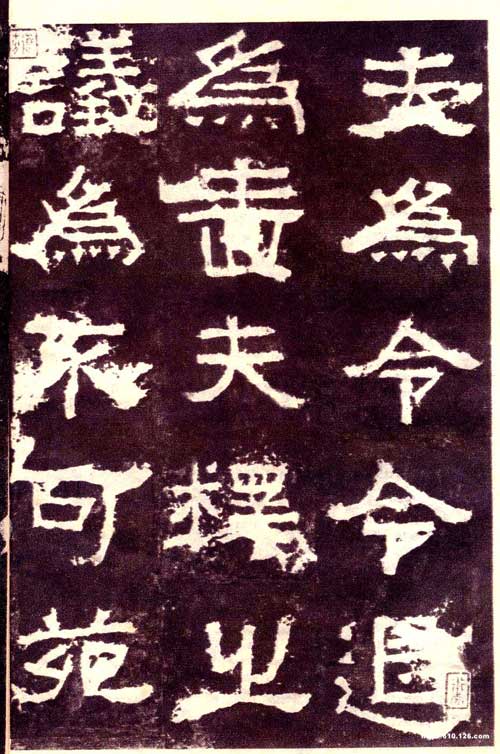
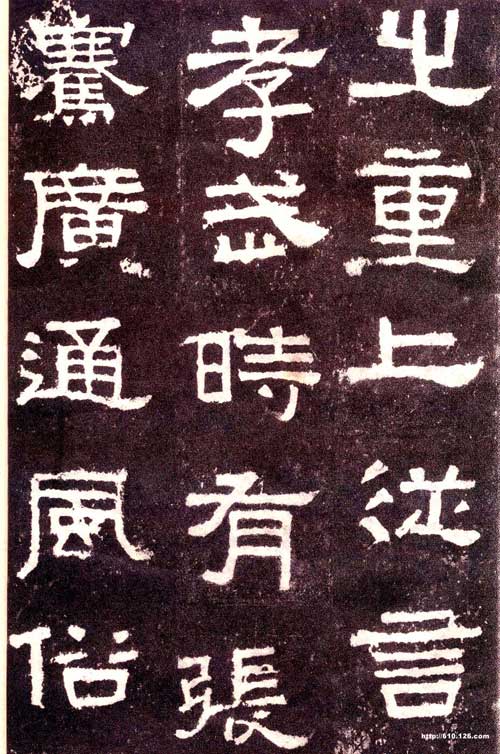
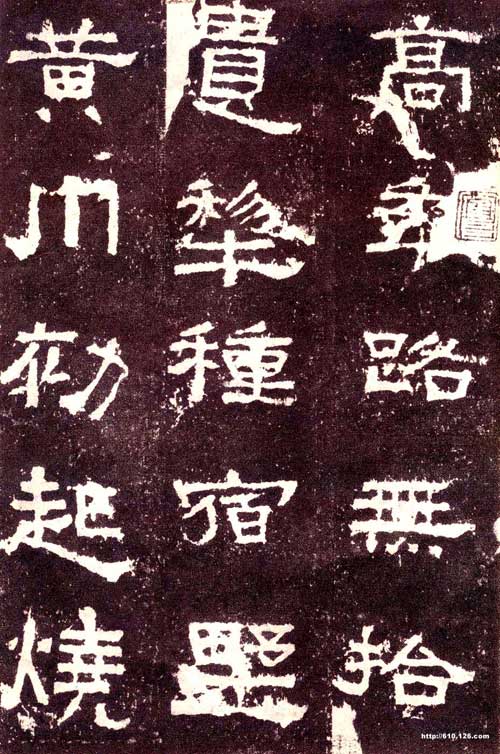
The full name is "Ode to Zhang Jun of the Ancient Gucheng Changdangyin Order of the Han Dynasty", also known as "Ode to Zhang Qian". The monument was erected in Dongping County, Shandong Province in the third year of Zhongping Emperor Ling of the Han Dynasty (AD 186). It is now displayed in the stele gallery of Dai Temple in Taishan, Shandong. The monument is 2.92 meters high and 1.07 meters wide.
The owner of the monument, Zhang Qian, whose courtesy name is Gongfang, was born in Chenliujiwu (now in Ningling, Henan). He once served as the mayor of the city (now northwest of Luoyang City, Henan) and the magistrate of Dangyin (now Tangyin County, Henan). Therefore, in order to commemorate his meritorious deeds, officials Wei Meng and others published a stone tablet to commemorate it. The stele has three columns, the upper two columns have 19 lines each, and the lower three lines are engraved with the name of the donor and the amount of the money. There are 15 lines of official script in Beiyang, with a full line of 42 characters, a total of 567 characters, and the character diameter is 3.5 cm. On the back of the stele are engraved the names of 41 officials who erected the stele and the amount of money they contributed. There are a total of 323 characters in 3 columns, 41 rows, in official script, with a character diameter of 3.5 cm. The seal script on the forehead reads "In praise of Zhang Jun of the Han Dynasty Gucheng Chang Dang Yin Ling", 12 characters in 2 lines, 9.5 cm in diameter. The style of the calligraphy is between the seal script and the official script and can be deliberately bent, just like the Miao seal script of the Han Dynasty. The 12 characters are divided into two rows without columns. They are tightly arranged and scattered in different sizes. They are integrated into each other. They may be shifted, twisted, long or short. They are strong and powerful. They are truly the masterpiece of the forehead.
This stele was discovered during digging in the early Ming Dynasty and stood in front of the Minglun Hall of Dongping Confucianism. At that time, the inscription was in good condition and readable. By the Zhengde period of the Ming Dynasty, only 5 characters were missing, and the 4 characters "Dongli Runse" were still in good condition; during the Qianlong period of the Qing Dynasty, the inscription "Dongli The word "dong" of "run" is half of the word "dong", and the word "run" is half of the word. There is still a midpoint beside the water, and the word "色" is half of the word "jun" below. After the founding of the People's Republic of China, a pavilion was built in the Dongping County Government Courtyard and a monument was erected inside. In 1966, it was moved to the Bingling Gate of Dai Temple and protected by an external glass cover. At this time, there are 65 characters left and 36 characters cannot be read. In October 1983, the stele gallery of Dai Temple was moved.
Since this stele was unearthed, it has been highly praised by epigraphers and calligraphers of all ages. The purpose of the poem is pure and ancient, the official script is simple and majestic, the font is square and full of changes, and the simplicity and thickness are charming. The silkworms are not parallel, the geese are not double, the outside is square and the inside is round, the inside is curled and the outside is extended. It is a treasure of sculpture and calligraphy art.
The earliest record of this stele was "Jin Xie Lin Lang" by Dumu of the Ming Dynasty. In the early Qing Dynasty, Gu Yanwu's "Jiushiwenji" suspected that it was a later copy. However, most scholars believe that the calligraphy style of the inscription is simple, majestic and upright, which cannot be done by Han people. In addition, the traces of natural peeling are not man-made, and the stele is the original carving. The "Xianyuhuang Stele" unearthed in 1973 is similar in style to this stele, and the "Xianyuhuang Stele" is 21 years earlier than the "Zhangqian Stele". Both of them are typical examples of Han Li's Chinese writing style.
The popular versions of "Zhang Qian Stele" include Ming rubbings, Qing rubbings, photocopies and reprints. The Ming-dynasty rubbings are the earliest version, and the version in the Palace Museum, with the four characters "Dongli polish" in the eighth line intact, is the best known as the "Dongli polish" version.
[Exchange items]
Liang Qian, Qing Dynasty: It is appropriate to start from "Yi Ying Stele" when studying official script. There are many "Zhang Qian" in recent times, which is also appropriate. ("Pingshu Tie")
Qing Dynasty Yang Shoujing: The trend of the Wei and Jin Dynasties has begun. This originated from "Ode to the West", became the folding knife head of the third stele of Huang Chu, and then became the "Shi Ping Gong" and other stele of the Northern Wei Dynasty genuine book. ("Ping Stele Record")
Liu Xizai of the Qing Dynasty: Han Dynasty steles are strict, such as "Heng Fang" and "Zhang Qian", both of which are flourishing.
Kang Youwei of the Qing Dynasty: As for Lifa, the physical energy is more beneficial: Ningzheng has "Heng Fang", "Baishi Shenjun", and "Zhang Qian". ("Guangyi Zhou Shuangji")

